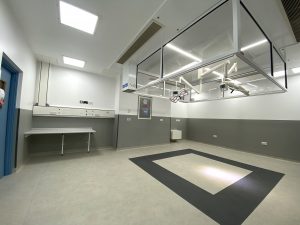With an annual UK spend of £3.4bn on policing, £3.13bn on fire-protection services, and ambulance services funded through primary care trusts and clinical commissioning groups whose budgets have been stretched because of the Covid-19 response, there is an increasingly urgent need to address the procurement challenges and efficiency obstacles faced by the blue light sector. Public sector organisations have a responsibility to spend public funds wisely, take into consideration value for money and longer-term commercial, economic, social, and environmental objectives. So, what are the challenges and how can procurement for this sector be improved?
In this article, with support from our partners Coreus Group, Key Account Manager Natalie Palframan will explore the main procurement challenges faced by the Blue Light Sector and the solutions and support we can offer at Procure Partnerships Framework.
Financial Challenges
Police, Ambulance, Fire & Rescue teams have faced a challenging eighteen months throughout the pandemic. Funding and resources have been diverted towards managing and containing the virus which has left budgets depleted and emergency service personnel on the brink of breaking point. As the UK begins its recovery, funding remains one of the biggest challenges for our blue light sector. Every taxpayer pound spent must count, so old fashioned procurement policies and inflexible and lengthy supplier contracts need a complete overhaul to ensure procurement best practice. There is a move towards innovation and collaboration when it comes to public procurement for emergency services, with UK frameworks being a popular choice to ensure quality and value for money from the supply chain. This has a positive impact for suppliers, making the blue light sector more accessible, procurement processes easier and quicker, resulting in a higher spend on products and services from this sector via frameworks.
Operational Challenges
There is a significant workforce shortage across the serving blue light sector. The Government has introduced the Police Officer Uplift Programme, which aims to recruit an additional 20,000 officers by March 2023 and is committed to ensuring forces have the equipment and services needed to operate effectively. Data released by the Fire Brigades Union (FBU), reveals that brigades across the country have lost a third of frontline firefighters since 2010. Threats of climate change related incidents such as flooding and wildfires, pandemics, terrorism, and building safety concerns following the Grenfell tragedy, means there is an immediate funding requirement for a minimum of 5,000 new firefighters. Paramedics, emergency medical crews and call-centre staff are under enormous pressure due to a severe lack of resources in the face of increased demand for ambulance services. The stress and strain placed on our emergency service personnel is posing a real risk of burnout, with long hours leading to mental health problems and personnel leaving the sector. There is a real need for investment in recruitment and technology to improve efficiency. A key part of driving efficiency is the digital transformation needed to improve integrated systems and communication. The Home Office is leading a government programme to deliver the new Emergency Services Network (ESN) critical communications system. The traditional airwaves system will be replaced by a fast, safe, and secure voice, video, and data transmission service across a 4G network to give frontline staff access to potentially lifesaving information in an instant. Real-time data can have a dramatic impact on strategic business decisions, and procurement has a critical role to play in technological advancement and innovation. Public bodies need to engage with innovators to find better and more sustainable practices for public procurement. Procurement frameworks make it possible for SME’s and pioneers to tender for opportunities that can add real value and overcome operational challenges, particularly with advancements in AI technologies.
Quality Challenges
Raising the quality and standards of the emergency service provision in the UK is a priority on the agenda as we build back better post-Brexit and reflect on the critical support the blue light sector provided during the Covid-19 crisis. Ensuring we have police and fire stations and emergency departments that are efficiently provided for in terms of equipment and workforce is essential. With many hospitals in desperate need of repair and refurbishment and police and fire protection vehicles in need of updating to achieve the Government’s net zero carbon emissions target by 2050, it is important for public sector bodies to utilise procurement frameworks that will allow them to procure collaboratively, identify savings, contract with suppliers that offer value for money and social value to give back to local communities and support positive sustainability and environmental objectives. Design and procurement are the key drivers in raising quality standards for the blue light sector.
Estates Challenges
Budget challenges has seen a rise in police stations closing, with the 2018 Public Accounts Committee Report revealing the primary reason forces are selling off assets is to raise funds for capital investment. Developments in technology has also driven down the demand for the requirement of police estates, with more people reporting non-urgent issues online rather than over the counter. Emergency service providers are considering a benefit to merging their estates to reduce costs and increase efficiency, by operating services out of a combined base. As the blue light sector continues to strive for efficiencies in the maintenance and provision of their estates, there is a focus on BREEAM standards of excellence in sustainability and environmental impact when considering the design of their buildings and infrastructure. Fire and protection services, who set controlled fires as part of essential training, contribute to carbon dioxide emissions, a harmful greenhouse gas, and so it is important to offset these activities by being environmentally conscious in other undertakings, such as the construction of estates, facilities management, and waste management.
Procurement Solutions
There is a clear rationale for collaborative procurement to overcome some of the financial, operational, and quality challenges faced by the blue light sector. Emergency service providers should no longer operate as standalone buyers and should work together to deliver the best value for public money, in addition to sharing resources, knowledge and best practice.
At Procure Partnerships we pride ourselves on understanding the specific requirements and challenges faced by blue light organisations, and we have developed a team of experienced and knowledgeable procurement experts who support procurement best practice and focus their expertise into delivering procurement frameworks that deliver flexible and robust contracts via a compliant and reliable supply chain. We support public sector bodies to achieve their strategic economic, social value and environmental targets. We have launched The National Minor Works Framework, which has a total OJEU value of £2.5bn. Projects can be procured in two value bands; £50,000 to £1m and £1m to £4m, making it suitable for all public sector organisations, including Local Authorities, NHS Trusts, and Blue Light Providers. We understand that one size does not fit all, and collaborative procurement needs to work differently for different goods and services; either by geographic location, volume, better commissioning or through leverage on existing infrastructures, which is why we offer procurement frameworks regionally with a range of suitable call-off methods.
Andrew Clancy, Managing Director at Coreus Group, Commented: “There are significant challenges facing the industry over the next 18 months that will pose a risk to the procurement of both Consultants and Contractors for Clients. The Blue Light sector is no different, but it is well placed to mitigate this by considering the economic, social and environmental factors of each project at a strategic level. Clearly, each project is bespoke with its own drivers in terms of time, cost and quality which impact the procurement strategy. However, on our projects, we are ensuring that we work closely in collaboration with Police, Fire and Ambulance services by championing early contractor involvement in the process. Recent government guidance on the Construction Playbook gives public sector bodies the tools to ensure the ambitious public sector spending targets are met. We are pleased to be a partner of Procure Partnerships in ensuring that Clients achieve value through procurement.”
Click Here To Download a Procure Partnerships Framework User Guide
Twitter
Linkedin



